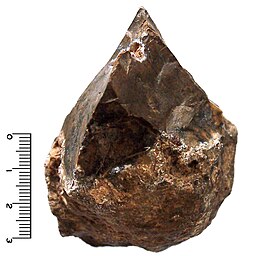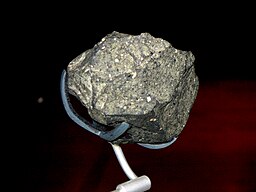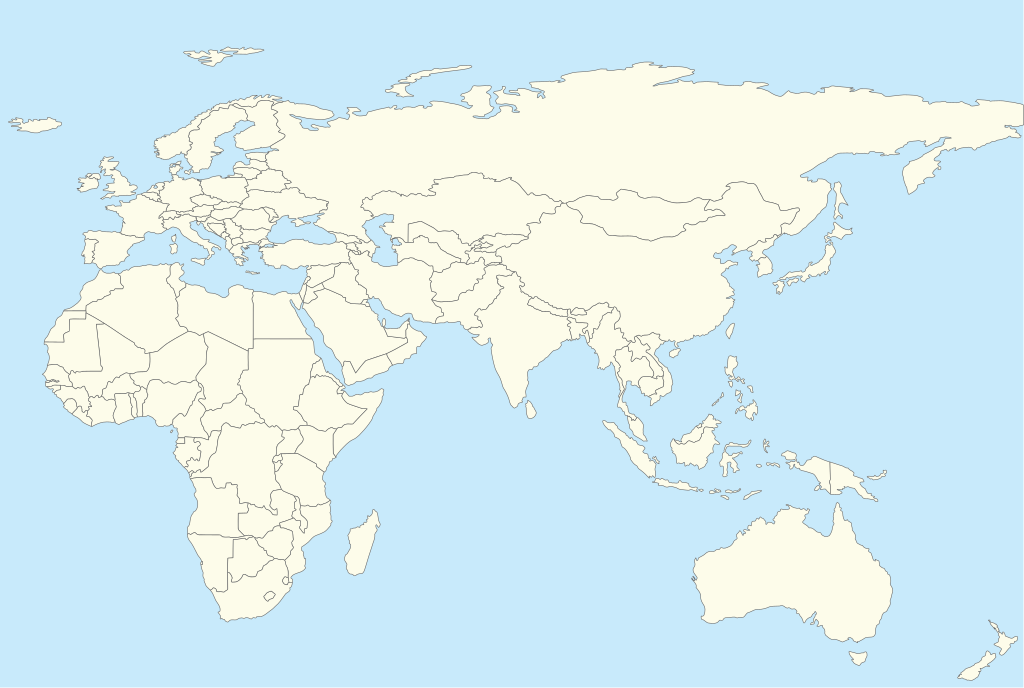奧都萬
 | |
| 地理範圍 | 歐亞非大陸 |
|---|---|
| 時期 | 舊石器時代初期 |
| 時間 | 公元前260萬年–170萬年 |
| 主要遺址 | 奧杜維峽谷 |
| 先前文化 | 洛邁奎[1] |
| 繼承文化 | 阿舍利 |
奧都萬,又稱奧杜韋文化(Oldowan)、模式I,是在史前普遍使用的一種石器的工業考古學(Industrial Archeology)風格。這些早期的工具十分簡易,其典型技術特徵為「砍砸器」。砍砸器是從石核的部分表面去除石片,形成用於切割、砍砸和刮削的鋒利邊緣,對於從石核敲出的石片所進行的表面微觀分析表明,某些石片也作為切割植物和屠宰動物的工具[2]。在舊石器時代初期(260萬年前至至少170萬年前)非洲、南亞、中東和歐洲大部分地區的古人類(早期人類)皆使用過奧都萬工具。緊隨在該技術工業之後的是更為複雜的阿舍利工業(在衣索比亞阿法爾地區戈納有兩個與直立人有關的遺址,分別距今150萬年和126萬年,遺址兼具奧都萬及阿舍利工具)。[3]
「奧都萬」(Oldowan)一詞取自坦尚尼亞的奧杜維峽谷遺址,考古學家路易斯·李奇於1930年代在那裡發現了第一批奧都萬石器。然而,當代一些考古學家和古人類學家更傾向於用「模式1」工具一詞來指稱礫石工具工業(包括奧都萬),「模式2」指稱雙面加工工具(包括阿舍利手斧),「模式3」指稱準備好核心之工具(最著名的是勒瓦婁哇技法[4]),等等。[5]
目前對奧都萬工具的分類仍有所爭議。瑪麗·李奇是第一個建立系統對奧都萬聚簇(assemblage)進行分類的人,並根據規定的用途建立了她的系統,該系統包括砍砸器、刮削器和捶打器。[6][7]然而,由於對人造石器用途的假設仍存在問題,近期對奧都萬聚簇的分類主要集中在製品方面。例如,Isaac等人的三類別:「打製修理類」(Flaked pieces,石核/砍砸器)、「廢片類」(Detached pieces,石片和碎片)、「打擊類」(Pounded pieces,用於錘打的礫石等)和 「未經打擊的產品」(運送至遺址的石塊)。[8]奧都萬工具有時被稱為「礫石工具」,之所以如此命名,是因為生產所選的胚料已經很像礫石形式的最終產品。[9]
目前尚未弄清楚是哪一種類人猿創造並使用了奧都萬工具,通常奧都萬工具的出現與驚奇南方古猿這個物種有關[10],並與能人和匠人等早期人屬物種一起蓬勃發展。早期直立人似乎繼承了奧都萬技術,並在170萬年前開始將其完善為阿舍利工業。[11]
尼古拉斯·托斯(Nicholas Toth)的研究表明,對早期石器製造者而言,最重要的工具可能是從砍砸器和礫石工具取下的鋒利石片,而非砍砸器和礫石工具本身。[12][13][14][15]





工具
[編輯]形狀和用途
[編輯]瑪麗·李奇將奧都萬工具分為重型、輕型、可利用的碎片(utilized pieces)和廢片(debitage)。[16]重型工具主要是石核工具。砍砸器的一側帶有刀刃,如果刀刃是透過剝落石核的一個面而形成,就是單面的(unifacial),如果是剝落兩個面,那麼就是雙面的(bifacial)。盤狀工具(Discoid tools)則大致為圓形,有外圍刀刃。多面體工具(Polyhedral tools)的刀刃是多面體的形狀。此外,還有球狀的錘石。
輕型工具主要是石片工具。有刮削器、錐子(有用於鑽孔的尖端)和雕刻器(有用於雕刻的尖端),有些功能也是重型工具所擁有的。例如,重型刮削器。
可利用的碎片工具是指一開始只有一個目的,卻被偶然利用。
奧都萬工具可能有很多用途,這些用途是透過對現代類人猿和狩獵採集者的觀察發現的。例如有些石頭會作砧座之用,可透過錘石在砧座上敲裂堅果和骨頭。充滿破損和凹痕的石頭證明了這種用途的可能性。
重型工具可以作為用於木材加工的斧頭,砍砸器和大石片都可能被用於此目的。例如一旦將木材分離,就可以用刮削器刮干淨,或者用尖狀器將其挖空。透過觀察用於刮削木材的刀刃所特有的微觀變化,這種用途就可得到證明。奧都萬工具也可以用來準備皮革,獸皮必須透過劃破、刺穿和刮淨殘留物來進行切割,石片最適用於此目的。
勞倫斯·基利(Lawrence Keeley)追隨謝爾蓋·塞門諾夫(Sergei Semenov)的腳步,重新製造了工具,並依最初推測的用途來使用,接著對這些工具的刀刃進行微觀研究(使用高功率光學顯微鏡)。他發現這些使用特徵的痕跡與史前工具的痕跡相符。用電子顯微鏡研究骨頭上的切割痕跡也得出類似的結果。
遺址
[編輯]完整的奧都萬遺址一覽表無法在此處列出。一些較知名的遺址包括:
筆記
[編輯]- ^ The Oldowan is classically considered the oldest industry of the Lower Paleolithic. The postulate of an even earlier, possibly pre-human (australopithecine) "Lomekwian" industry is due to Harmand, S.; et al. 3.3-million-year-old stone tools from Lomekwi 3, West Turkana, Kenya. Nature. 2015, 521 (7552): 310–315. Bibcode:2015Natur.521..310H. PMID 25993961. S2CID 1207285. doi:10.1038/nature14464.
- ^ Oldowan and Acheulean Stone Tools | Museum of Anthropology. anthromuseum.missouri.edu. [2021-06-21]. 原始內容存檔於2021-05-07.
- ^ Semaw, Sileshi; Rogers, Michael J.; Simpson, Scott W.; Levin, Naomi E.; Quade, Jay; Dunbar, Nelia; McIntosh, William C.; Cáceres, Isabel; Stinchcomb, Gary E. Co-occurrence of Acheulian and Oldowan artifacts with Homo erectus cranial fossils from Gona, Afar, Ethiopia. Science Advances. 4 March 2020, 6 (10): eaaw4694. Bibcode:2020SciA....6.4694S. PMC 7056306
 . PMID 32181331. doi:10.1126/sciadv.aaw4694.
. PMID 32181331. doi:10.1126/sciadv.aaw4694.
- ^ Levallois technique. Oxford University Press. [30 October 2020]. (原始內容存檔於2021-04-20).
- ^ Clark, J. G. D. World prehistory: a new outline. Cambridge: Cambridge University Press. 1969.
- ^ Clark, J.; de Heinzelin, J.; Schick, K.; Hart, W.; White, T.; WoldeGabriel, G.; Walter, R.; Suwa, G.; Asfaw, B.; et al. African Homo erectus: Old radiometric ages and young Oldowan assemblages in the middle Awash Valley, Ethiopia. Science. 1994, 264 (5167): 1907–1909. Bibcode:1994Sci...264.1907C. PMID 8009220. doi:10.1126/science.8009220.
- ^ Leakey, Mary. A Summary and Discussion of the Archaeological Evidence from Bed I and Bed II, Olduvai Gorge, Tanzania. Human Origins. 1971: 431–460.
- ^ Isaac, G. Ll., Harris, J. W. K. & Marshall, F. 1981.
- ^ Napier, J. Fossil Hand Bones from Olduvai Gorge. Nature. November 1962, 196 (4853): 409–411. Bibcode:1962Natur.196..409N. doi:10.1038/196409a0.
- ^ De Heinzelin, J; Clark, JD; White, T; Hart, W; Renne, P; Woldegabriel, G; Beyene, Y; Vrba, E. Environment and behavior of 2.5-million-year-old Bouri hominids. Science. 1999, 284 (5414): 625–9. Bibcode:1999Sci...284..625D. PMID 10213682. doi:10.1126/science.284.5414.625.
- ^ Richards, M. P. A brief review of the archaeological evidence for Palaeolithic and Neolithic subsistence. European Journal of Clinical Nutrition. December 2002, 56 (12): 1270–1278. ISSN 1476-5640. PMID 12494313. doi:10.1038/sj.ejcn.1601646 (英語).
- ^ Toth, Nicholas. The oldowan reassessed: A close look at early stone artifacts. Journal of Archaeological Science. March 1985, 12 (2): 101–120. doi:10.1016/0305-4403(85)90056-1.
- ^ Toth, Nicholas. The First Technology. Scientific American. April 1987, 256 (4): 112–121. ISSN 0036-8733. doi:10.1038/scientificamerican0487-112.
- ^ Toth, Nicholas; Clark, Desmond; Ligabue, Giancarlo. The Last Stone Ax Makers. Scientific American. July 1992, 267 (1): 88–93. ISSN 0036-8733. doi:10.1038/scientificamerican0792-88.
- ^ Toth, Nicholas; Schick, Kathy D.; Savage-Rumbaugh, E.Sue; Sevcik, Rose A.; Rumbaugh, Duane M. Pan the Tool-Maker: Investigations into the Stone Tool-Making and Tool-Using Capabilities of a Bonobo (Pan paniscus). Journal of Archaeological Science. January 1993, 20 (1): 81–91. doi:10.1006/jasc.1993.1006.
- ^ There is a good online summary of Mary's classification on Effland's site for Anthropology ASB22 (頁面存檔備份,存於網際網路檔案館) at Mesa Community College in Arizona, apparently written by Effland.
資料來源
[編輯]- Braidwood, Robert J., Prehistoric Men, many editions.
- Domínguez-Rodrigo, M.; Pickering, T. R.; Semaw, S.; Rogers, M. J. Cutmarked bones from Pliocene archaeological sites at Gona, Afar, Ethiopia: Implications for the function of the world's oldest stone tools. Journal of Human Evolution. 2005, 48 (2): 109–121. PMID 15701526. doi:10.1016/j.jhevol.2004.09.004.
- Edey, Maitland A., The Missing Link, Time-Life Books, 1972.
- Schick, Kathy D.; Toth, Nicholas, Making Silent Stones Speak', Simon & Schuster, 1993, ISBN 0-671-69371-9
- Semaw, Sileshi. The World's Oldest Stone Artefacts from Gona, Ethiopia: Their Implications for Understanding Stone Technology and Patterns of Human Evolution Between 2·6–1·5 Million Years Ago. Journal of Archaeological Science. 2000, 27 (12): 1197–1214 [2021-04-18]. doi:10.1006/jasc.1999.0592. (原始內容存檔於2020-07-28).
- Isaac, Glynn and Harris, JWK The Scatter between the Patches 1975
- Isaac, Glynn. The Food Sharing Behavior of Protohuman Hominids. Scientific American. 1978, 238 (4): 90–108. Bibcode:1978SciAm.238d..90I. PMID 418504. doi:10.1038/scientificamerican0478-90.
- Binford, Lewis (1987) Searching for Camps and Missing the Evidence: Another Look at the Lower Paleolithic
- Toth, Nicholas (1985) The Oldowan reassessed: a close look at early stone artifacts Journal of Archaeological Science
- Susman, Randall L, Journal of Anthropological Research, Vol. 47, No. 2, A Quarter Century of Paleoanthropology: Views from the U.S.A. (Summer, 1991), pp. 129–151
外部連結
[編輯]- Oldowan Pebble Tools of Europe (頁面存檔備份,存於網際網路檔案館)
- Oldowan Pebble Tools of Africa (頁面存檔備份,存於網際網路檔案館)
- Oldowan Flake Tool (頁面存檔備份,存於網際網路檔案館)
- Stone Age Hand-axes,存檔於網際網路檔案館(存檔日期 February 4, 2007)
- Early Palaeolithic
- Stone Age Reference Collection
- Microwear polishes on early stone tools from Koobi Fora, Kenya (頁面存檔備份,存於網際網路檔案館), article in Nature 293, 464–465 (8 October 1981). The summary and the references are displayed at no charge at the Nature site.
- Geoarchaeology of the earliest paleolithic sites (Oldowan) in the north Caucasus and the East Europe
- An Ape's View of the Oldowan,存檔於網際網路檔案館(存檔日期 May 21, 2008), T. Wynn and W.C. McGrew, Man 24:383–398; 1989.
- Plummer, Thomas. Flaked Stones and Old Bones: Biological and Cultural Evolution at the Dawn of Technology (PDF). Yearbook of Physical Anthropology. 2004, 47: 118–164 [2021-04-18]. PMID 15605391. doi:10.1002/ajpa.20157. (原始內容 (PDF)存檔於2007-06-29).

